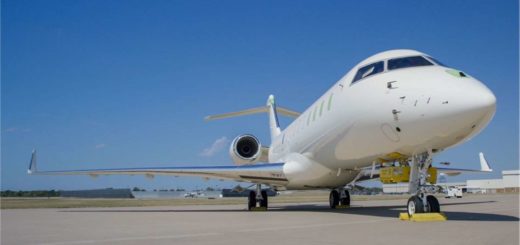Cranfield unveils hydrogen-electric Stingray drone at Dubai Airshow 2025
Cranfield Aerospace Solutions (CAeS) unveiled the ST-5 Stingray long-endurance drone at the Dubai Airshow 2025, marking the first public appearance of the hydrogen-electric unmanned aircraft the company is fast-tracking through initial development. The UK aerospace firm also announced a new memorandum of understanding with the National Oceanography Centre (NOC) to explore using the aircraft for marine and climate-related research.
The Stingray is a hybrid wing-body unmanned aircraft with a 5.5-meter wingspan, designed from the outset around a hydrogen-electric powertrain. CAeS said the distributed propulsion layout increases aerodynamic and integration efficiency, allowing the drone to carry up to 60% more payload volume than conventional aircraft of similar weight. The company has not yet released projected endurance, range, or speed figures, but said the design is intended to support long-duration missions in demanding environmental conditions.
The MoU with NOC will support collaboration on ocean monitoring under the Europe’s Aria Forecasting Tipping Point program, which is examining processes linked to a potential slowdown or shutdown of ocean convection in the North Atlantic Subpolar Gyre. Scientists say excess freshwater from melting ice has raised concerns about changes to circulation that could impact Western European climate and marine ecosystems. NOC scientists are studying how uncrewed aircraft could contribute to sustained ocean observation efforts.
“The Stingray UAV offers exceptional endurance and payload capacity, making it an attractive platform for advancing our goals of long-term, low-cost, zero-emission airborne data collection,” said Christine Gommenginger, Principal Scientist at NOC. She added that the MoU strengthens cooperation ahead of potential joint airborne demonstration campaigns over challenging marine environments.
According to CAeS, development of the Stingray began in June 2025 and has moved quickly from concept design through parts procurement, bench testing, and structural assembly. The company said the aircraft is now undergoing propulsion-system installation. The program draws on CAeS’s previous blended-wing work, including an 11-year collaboration with Boeing and NASA on the X-48B and X-48C concept aircraft, where the team focused on maximizing aerodynamic efficiency and payload integration.
Paul Clarke, Chief Technology Officer at CAeS, said the ST-5 is intended to be the first UAV platform specifically designed to maximize the advantages of a hydrogen-electric powertrain. “The aerodynamic efficiency of the design, combined with the integration efficiency of our modular fuel cell technology, creates a step change in mission performance and provides significant real estate to accommodate diverse payloads,” he said.
The platform is being developed with multiple variants in mind, allowing operators to prioritize increased payload or increased endurance depending on mission needs. CAeS said the aircraft’s size and configuration make it suitable for applications including cargo transport, atmospheric research, search and rescue, and specialized environmental sensing.
CAeS’s largest investor, the Abu Dhabi-based Strategic Development Fund, showcased the aircraft at its Dubai Airshow 2025 pavilion. The organization is part of the EDGE Group, which has increased its activity in the uncrewed systems sector through investments and partnerships across the region.The post Cranfield unveils hydrogen-electric Stingray drone at Dubai Airshow 2025 appeared first on AeroTime.
Cranfield Aerospace Solutions (CAeS) unveiled the ST-5 Stingray long-endurance drone at the Dubai Airshow 2025, marking the first public appearance of the hydrogen-electric…
The post Cranfield unveils hydrogen-electric Stingray drone at Dubai Airshow 2025 appeared first on AeroTime.






